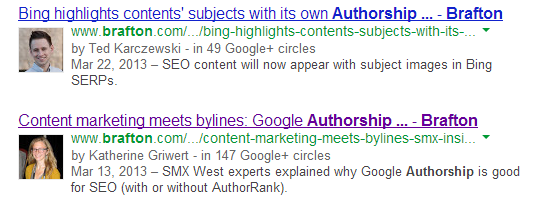Unlike search engine marketing, there aren’t hard and fast rules for social media campaigns. Marketers know they need to be conversational and engaging – participatory without being overtly promotional – but they may not know how to make social content work toward their other business goals. The speakers at SMX East 2013 offered a number of suggestions that can help brands get more search value out their social media campaigns.
Here are eight steps compiled from those suggestions that can help marketers amplify their efforts:
Step 1: Identify influencers to increase reach
One of the biggest signals of an effective social marketing campaign is a well-connected network. That means influencers. Brands can greatly expand their content’s reach when they deliver it to key individuals who are recognized as industry leaders with their own dedicated readerships.
There are certain types of people who have the visibility and influence to give brands a measurable lift in reach, according to Debra Mastaler, Alliance-Link‘s Link Building Specialist.

They include:
- Bloggers and journalists
- Celebrities
- Experts and advocates
- Reviewers
But how can marketers come into contact with those individuals, suss out who is actually an influencer and then build relationships with them?
Step 2: Find authorities on forums
- Technorati and Alltop
- The Google blog directory
- Facebook search (Bloggers who have created Facebook pages for their websites likely have a big enough marketing influence to justify the efforts, said Mastaler.)
- SCORE, a platform for retired executives
- Muck Rack and Press Pass for authoritative journalists
Step 3: Check credentials
- Make sure authors are on Google+ and involved in G+ communities
- Review Klout scores (This opt-in network indicates individuals are interested in building an online reputation and visibility.)
- Use free trials on sites like followerwonk (a tool that pulls Twitter bios and follower counts), Tweetreach and SocialBro (sites that show how far an individual’s content reaches.)
Step 4: Reach out to potential influencers
- Actively follow journalists on Twitter
- Align yourself with credible allies
“Once you identify followers, use comments as icebreakers,” advised Mastaler. It might be easier to connect with heavy-hitters on casual forums where it’s acceptable (and advisable) to engage openly with people in your network. Over time, these discussions can turn into mutually beneficial relationships that give brand content more exposure on social networks and in search results.
Step 5: Identify networks that provide the most visibility
If companies’ target demographics are primarily on Facebook, it makes sense to build large presences on this social network. The same goes with Twitter, LinkedIn, Pinterest, Google+ or any other platform that emerges.
All the same, there is evidence that certain sites offer competitive advantages when it comes to gaining exposure in search results. Namely, brands and writers with stronger Google+ presences tend to take up more search result real estate, according to Virante Director of Digital Outreach Mark Traphagen.
Step 6: When all else fails, become an influencer yourself
Use G+ to build Authorship presences
Dredging up the age-old debate about whether Google+ adds SEO value, Traphagen shared how he’s seen success. An early adopter, he joined just four days after G+ was launched on the hunch that the search engine’s decision to build a social platform would one day impact search performance. He now boasts:

- 62,000 followers
- 20,000+ members across communities
- A position as one of the Top 500 U.S. Google+ users
Perhaps more importantly, Traphagen noticed over time that his content performed drastically better with the influence he built on the search-engine owned network. After creating a host of resources about backlink data and sharing them on Google+, his content dominated eight of 10 search results on a Google SERP.
There are two reasons for this: Authorship and PageRank
According to Traphagen, “Communities have PageRank. Google is evaluating them much in the same way that they evaluate regular websites.”
While Google is adamant that the patents it’s secured for a ranking signal based on author credibility is not active, Traphagen defended his stance that marketers who leverage the social network will make their content more visible in search results.
Step 7: Look at the bigger ROI picture
Marketers are hindering their own social and search efforts by viewing them as autonomous practices, according to Annalise Kaylor, Associate Creative Director at AimClear.
“Stop looking at SEO, PPC and social as separate buckets. Start asking, ‘What drives the results?'”
“Stop looking at SEO, PPC and social as separate buckets. Start asking, ‘What drives the results?'” she told the audience.
When marketers look at the bigger picture, they will recognize how social shares impact SEO, and in turn, how search engine marketing identifies paid campaign opportunities.
Some examples:
- A Facebook photo that earn a lot of clicks can be featured on a blog post to increase traffic
- A Tweet that is not shared indicates a certain topic is not relevant to audiences and should be downplayed in the editorial calendar
- A PPC ad that drives lots of traffic suggests organic content around said keyword might also earn clicks
Taking a holistic approach, marketers will see how campaigns can work together and identify gaps where cross-platform practices could be driving better results.
Step 8: Create content that’s worth sharing in the first place
Regardless of which networks brands use, reach and ROI ultimately come down to content quality. If a company is creating interesting information for social networks and the web, and providing readers with value – that content will be shared across the internet and attract the online community’s attention.




